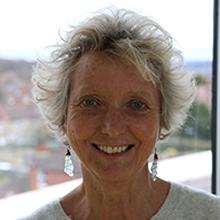Pioneering use of 'bionic' electrodes aims to improve arm and hand movement
The world's first clinical application of 'bionic' miniature neuromuscular stimulators implanted into the muscles of the arm is being developed by a multidisciplinary team of researchers at the University of Southampton. This pioneering system will aim to control, and re-educate, through electrical stimulation, weak or paralysed muscles to produce functional arm and hand movement in patients who have suffered damage to the central nervous system following a stroke.
The research is based on the BION®* microstimulators (Alfred Mann Foundation, Valencia, CA, USA) that once implanted into a patient's arm act like 'bionic neurones' mimicking the messages from the brain to recreate useful function in paralysed or weak arms. Each electrode measures less than 2.4 mm in diameter and about 16.5 mm long and is implanted within the muscle near to where the nerve attaches - this is called the motor point. There are no wires connecting the electrodes to the central control unit; power and control signals are transmitted through radio frequency signals via a small inductance coil worn on the arm. Because the BION electrodes are so small they can be implanted into many different muscles providing the potential to control fine, graded movement, essential for hand and arm function. Each electrode is 'individually addressed' so each BION stimulator can be controlled independently, to a maximum of 255 BION devices.
The project is led by Dr Jane Burridge, Senior Research Fellow of the University's School of Health Professions and Rehabilitation Sciences: "We aim to develop implantation techniques and control systems and measure the effect of stimulation on the individual's control of hand and arm movement. The use of these miniature stimulators injected into muscles of the arm in order to facilitate functional movement in people is a very exciting development. This could prove to be a much more user friendly way of controlling movement and enabling recovery of movement in patients who are severely disabled.
"The BION system is much less invasive than previous generations of neural implants and overcomes the cosmetic and application problems of surface stimulation systems. It will involve extensive measurements of movements, forces generated by stimulation, the effect on the activity of the muscles and people's ability to control their movement. We will also be measuring whether using the BION system improves their everyday arm and hand skills," added Dr Burridge.
"Because this is the first time BION devices have been used in this way the project will initially involve only four devices being injected into four muscles that control opening of the hand and support grip. The system will be activated initially by a simple trigger and have no more than three phases enabling the user to open their hand, grasp an object and release it. During the second and third phases of the project, we will extend the implantation to include the triceps muscle, which extends the elbow to support a reaching movement. We will also develop a more sophisticated system to control the BION devices in order to make the movements more functional and varied in time.
"The University of Southampton is becoming a centre of excellence in the study of movement disorders and the BION project is a superb example of this. The research itself is only possible through multidisciplinary collaboration between therapists, doctors, neuroscientists and engineers," said Dr Burridge.
About 100,000 people suffer a stroke in the UK each year, and with increasing life expectancy this number is rising despite better control of the conditions that make people more likely to have a stroke, such as high blood pressure and diabetes. Improved acute care also means that more people survive a stroke, but are left with a disability. About two thirds of people who have a stroke regain the ability to walk, but less than 30 per cent regain useful arm function. Research has shown that it is poor arm and hand function that leaves people unable to live full and independent lives.
Related Staff Member
Notes for editors
- The University of Southampton is a leading UK teaching and research institution with a global reputation for leading-edge research and scholarship. The University, which celebrated its Golden Jubilee in 2002, has 20,000 students and over 4,500 staff and plays an important role in the City of Southampton. Its annual turnover is in the region of £235 million.
- The School of Health Professions and Rehabilitation Sciences was established in 1993 and is at the forefront in healthcare research, education and professional practice. The school is part of the Faculty of Medicine, Health and Life Sciences and is engaged in research activities across a range of specialist fields including occupational therapy, physiotherapy and podiatry. The school also offers an active programme of taught postgraduate courses and postgraduate research students.
- The Alfred Mann Foundation (AMF) is a public non-profit foundation endowed by Mr. Alfred Mann. AMF is engaged in scientific and medical research. Its purpose is to improve the quality of life of people suffering from debilitating medical disabilities by developing innovative bionic solutions. AMF is based in Valencia, California, USA. It has about 100 staff members and a budget of over $12 million per year.
- * BION is a registered trademark of Advanced Bionics, Co., Valencia, CA, USA
